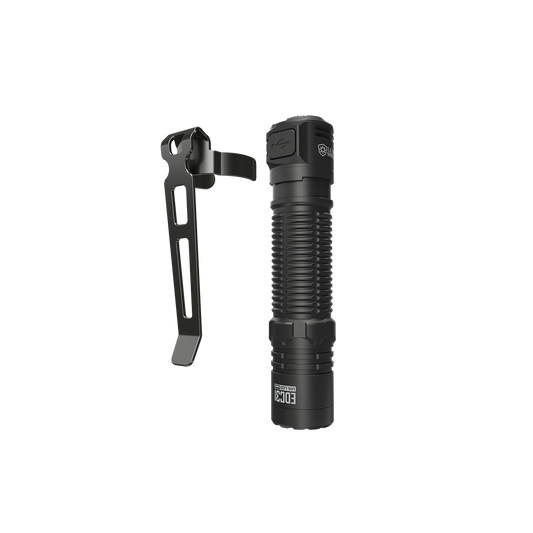
Hybrid Training: A Deep Dive into Its Benefits and Customization Options
You've heard it before; it’s been a thing for decades: If you plan to bulk up, you can’t do heavy cardio, and vice versa. It’s permeated every gym and persists. And now that the science is out, every magazine is pretending like they’ve been saying it for years: Hybrid training is the way to go. The thing is, if you were/are in, say, the Army, Police force, or the Fire department, you’ve likely been hybrid training.
Hunters, Outdoorsmen and Combat athletes have already known this for the longest time. You need both your cardio and strength to be on the up and up to be effective.
A Warrior must be all-rounded.
Hybrid training has recently emerged as a dominant force in the fitness world, you know, calling it the “popular” & “in” thing now. Like CrossFit and the like didn’t exist, and there haven’t been competitions of the like. Competitions like CrossFit, Hyrox, and Spartan have been around for years. Hybrid training isn’t the latest fad. It’s the correct way to train if you want an all-rounded physique. Strength and endurance. This is especially true as we age.
It offers a dynamic and results-oriented approach to exercise. It transcends the limitations of single-discipline workouts by strategically combining multiple training methods to achieve well-rounded fitness benefits. Let's embark on a quick exploration of hybrid training, delving into the specific types of training integrated within it, the various ways to structure a hybrid workout, and the many possibilities for customization to match your unique goals.
The purpose of hybrid training is to improve both strength and endurance simultaneously.
Is there a place for specific and targeted training? Of course. If you are specifically training for, say, the Arnold Classic or the Boston Marathon, sure. But most people aren’t training for a major competition at the highest levels.

Types of Training Integrated in Hybrid Programs:
- Strength Training: This pillar of hybrid training focuses on building muscle mass and strength. It involves exercises that work against an external resistance, forcing your muscles to adapt and grow stronger. Here's a breakdown of some common strength training methods:
- Weightlifting: This utilizes barbells, dumbbells, kettlebells, or weight machines to create resistance. Examples include squats, deadlifts, bench presses, rows, and overhead presses. Weightlifting is particularly effective for building overall strength and muscular hypertrophy (muscle growth).
- Bodyweight Exercises: These exercises leverage your body weight as resistance. Examples include push-ups, pull-ups, lunges, planks, and dips. Bodyweight exercises are a convenient option for working out anywhere and can be easily scaled to suit your fitness level.
- Resistance Band Training: This method utilizes elastic bands to provide variable resistance throughout an exercise. Resistance bands offer a portable and versatile option for strength training, allowing you to target a variety of muscle groups.
- Cardiovascular Exercise (Cardio): Cardio elevates your heart rate and improves your cardiovascular health, the efficiency with which your heart and lungs deliver oxygen throughout your body. Here's a closer look at some popular cardio exercises:
- Continuous Cardio: This involves sustained exercise at a moderate intensity for an extended period. Examples include running, swimming, cycling, and brisk walking. Continuous cardio is excellent for building endurance and improving overall cardiovascular health.
- High-Intensity Interval Training (HIIT): This method alternates between short bursts of intense activity and periods of rest or lower-intensity exercise. HIIT offers a time-efficient way to improve cardiovascular health, burn calories, and boost metabolism.
- Other Disciplines: Hybrid training extends beyond just strength and cardio. You can incorporate elements from different disciplines like:
- Flexibility Training: Yoga, Pilates, and static stretches improve your range of motion, reduce muscle tension, and enhance overall mobility. This can lead to improved athletic performance, better posture, and a reduced risk of injuries.
- Balance Training: Exercises that challenge your balance, like standing on one leg or using wobble boards, improve coordination and stability. This can benefit activities like walking, running, and playing sports, where good balance is essential.
- Sport-Specific Drills: If you participate in a specific sport, integrating drills that mimic movements used in your sport can significantly enhance your performance on the field. For example, a basketball player might incorporate plyometric exercises (jumping exercises) to improve vertical jump, while a soccer player might add agility drills to improve footwork and change of direction.

How Hybrid Training Works: Optimizing Your Workout Structure
There are two main approaches to structuring a hybrid workout, each offering unique benefits:
- Concurrent Training: This involves combining different training styles within the same workout session. Here are some examples of how to implement concurrent training:
- Strength Training Circuit: Design a circuit that alternates between strength training exercises for different muscle groups and short bursts of cardio exercises like jumping jacks or jump rope. This keeps your workout dynamic and efficient.
- Cardio Followed by Strength Training: You can start with a longer cardio session, like a 30-minute run, followed by some targeted strength training exercises to work specific muscle groups.
- Periodized Training: This approach involves dedicating different training blocks (mesocycles) to focus on specific aspects of fitness. Here's a breakdown of how periodization works:
- Strength Focus: During a strength-focused mesocycle, your workouts will primarily consist of strength training exercises with higher weight and lower repetitions. This allows for the focused development of muscular strength and hypertrophy.
- Cardio Focus: A cardio-focused mesocycle might emphasize exercises like running or HIIT workouts to improve your cardiovascular endurance. This approach allows for targeted progress while providing adequate recovery for different muscle groups and energy systems.
Benefits of Customization in Hybrid Training: Tailoring Your Program for Success
A significant advantage of hybrid training is its versatility. It can be customized to your:
Fitness Level: Whether you're a beginner just starting your fitness journey, an intermediate exerciser looking to take your workouts to the next level, or an advanced athlete seeking to optimize performance, hybrid training can be adapted to your specific needs. Beginners can start with bodyweight exercises and gradually progress to light weights as they build strength. Intermediate exercisers can challenge themselves with higher weight loads, more complex exercises, and by incorporating plyometric exercises for power development. Advanced athletes can utilize advanced weightlifting techniques, periodization strategies, and sport-specific drills to maximize their performance.
- Goals: Different goals require different training emphases. Here are some examples of how to tailor your hybrid program to your specific goals:
- Building Muscle and Endurance: Combine weightlifting exercises that target major muscle groups with running or cycling to build muscle mass while improving cardiovascular health and endurance.
- Fat Loss and Agility: HIIT workouts are excellent for burning calories and boosting metabolism. Pair HIIT with bodyweight exercises that work multiple muscle groups simultaneously to enhance agility and coordination. This combination can lead to significant fat loss while improving overall fitness.
- Sport-Specific Conditioning: For athletes, integrate sport-specific drills that mimic movements used in your sport alongside strength training exercises that target the necessary muscle groups. For example, a soccer player might include agility drills, plyometric exercises, and core strengthening exercises in their hybrid program.
- Preferences: Some people enjoy the high-intensity nature of HIIT workouts, while others prefer the controlled movements of weightlifting or the mindful practice of yoga. Hybrid training allows you to incorporate activities you find enjoyable, making it more likely you'll stick with your program in the long run. You can prioritize activities you find fun while still incorporating exercises that target your goals.
Important Considerations for Safe and Effective Hybrid Training:
- Planning and Balance: To ensure proper recovery and prevent overtraining, it's crucial to plan your hybrid routine carefully. Here are some key points to consider:
- Schedule Rest Days: Allow your body adequate time to recover between workouts. Aim for at least one rest day per week and prioritize rest and recovery for different muscle groups. Don't try to do too much too soon, especially if you're new to exercise. Gradually increase the intensity and volume of your workouts over time.
- Periodization: Consider incorporating periodization principles into your program, even if you're a beginner. This allows for the focused development of different fitness aspects while preventing plateaus and burnout.
- Listen to Your Body: Pay close attention to how you feel during and after your workouts. Here are some signs to watch out for:
- Pain: If you experience any discomfort during your workouts, stop the exercise and consult a healthcare professional.
- Excessive Fatigue: Feeling excessively tired after your workouts could indicate overtraining. Adjust the intensity or duration of your workouts or take a rest day.
- Dizziness: Dizziness during or after exercise can be a sign of dehydration or low blood sugar. Ensure proper hydration before, during, and after your workouts.
- Seek Guidance: If you're unsure where to start or need help designing a safe and effective hybrid program, consider consulting a certified personal trainer. They can assess your fitness level, goals, and any limitations you may have and create a personalized program that aligns with your needs and preferences. A trainer can also guide proper form and technique to help you avoid injuries and maximize your results.
Here's a example of a Hybrid traing program you can tweak to suit your needs:

By incorporating the principles of hybrid training, considering the factors mentioned above, and tailoring your program to your specific goals and preferences, you can create a dynamic and effective workout routine that keeps you engaged, challenges your body in different ways, and helps you achieve your fitness goals sustainably and enjoyably.
























































